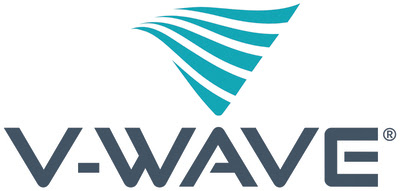
“Even in our population of advanced Heart Failure patients, we saw improvement in multiple indices of cardiac function.”
Patients were implanted with the shunt during a minimally invasive procedure and were discharged home the next day. In this Roll-in cohort there were no procedure- or device-related major adverse cardiac or neurological events. After 12 months, patients with moderate or severely reduced left ventricular ejection fraction (LVEF) had significantly improved LVEF by 4.6±9.3 (p=0.008) absolute % as compared to baseline prior to shunt implantation. Likewise, measures of RV systolic function including right ventricular fractional area change (RVFAC) and tricuspid annular plane systolic excursion (TAPSE), improved by 5.5±9.1 absolute % and 1.5±2.5 mm, respectively, regardless of baseline LVEF (p<0.0001 for both). Several additional indices of LV and RV dimensions and systolic function similarly improved. As there were no substantive changes in medical therapy, the authors observed that the findings likely resulted from the shunt device unloading high diastolic pressures in the LV, while not volume overloading the right-side of the heart.
Dr. Nunez explained, “We hypothesized that the V-Wave shunt with a 5-mm diameter orifice, would not cause right heart dilatation and deterioration from chronic volume overloading, which has been seen with the use of a larger (8-mm) shunt. To our delight, we found multiple indicators that the RV was actually getting better. This may be clinically important considering the recent negative REDUCE-LAP-HF II trial that used a different and larger 8-mm interatrial shunt that has about twice the flow as the 5-mm V-Wave Ventura Shunt. One reason for lack of efficacy seen in REDUCE LAP-HF II may have been that their shunt overloaded the RV with excessive blood volume. We have knowledge from decades of treating patients with congenital atrial shunts that if they are too big, they must be closed before they cause irreversible injury to the right-heart, whereas if they are smaller, they can be left untreated because they do not cause harm.”
“These findings establish a basis for the hypothesis that a correctly sized shunt may allow both ventricles to beneficially (reverse) remodel, thus restoring cardiac function for the longer term. Even in our population of advanced Heart Failure patients, we saw improvement in multiple indices of cardiac function,” said Professor William Abraham, MD, V-Wave’s Chief Medical Officer. “More importantly the randomization arm of the RELIEVE-HF clinical trial is now enrolling the same high-risk HF patient population in a double-blind randomized controlled trial. Enrollment is expected to be completed by the Fall of 2022. Primary results will be available when the last enrolled patient has been followed for 12 months. This should provide the most definitive answer to date on the safety and effectiveness of interatrial shunting for HF.”
HF is the end-stage of most forms of heart disease, affecting six million Americans and more than 60 million people worldwide. Despite advances in therapy, premature death, recurrent hospitalization, and deteriorating quality-of-life remain a growing problem and represent a large burden to healthcare systems.
“These data further support our strategy that using appropriate clinical criteria for inclusion of patients at high risk for HF-related untoward events, in conjunction with an optimally sized interatrial shunt may be safe and result in improved cardiac function,” said Dr. Neal Eigler, MD, and CEO of V-Wave. “Moreover, this strategy does not to require the additional complexity and cost of performing invasive hemodynamic exercise testing to determine candidacy for shunt placement. This is an exciting time in cardiology, where the nexus of newer pharmaceuticals and compatible device therapies has the potential to create synergistic improvements that could benefit a very large number of patients suffering from advanced HF.”
About RELIEVE-HF
See NCT03499236 at https://clinicaltrials.gov.
About V-Wave Ltd.
V-Wave is a privately held medical device company with offices in Israel and the U.S. For more information, please visit www.vwavemedical.com.
This press release contains certain forward-looking statements that involve risks and uncertainties, including statements related to clinical development and potential regulatory approval of V-Wave’s products. All forward-looking statements and other information included in this press release are based on information available to V-Wave as of the date hereof, and the Company assumes no obligation to update any such forward-looking statements or information. The company’s actual results could differ materially from those described in the company’s forward-looking statements.
CAUTION: Investigational device. Limited by Federal (or United States) law to investigational use. The V-Wave Ventura® Interatrial Shunt System is not available for sale in the United States or other countries.

